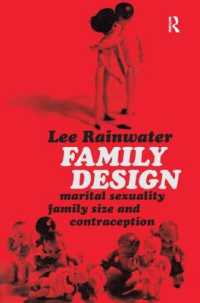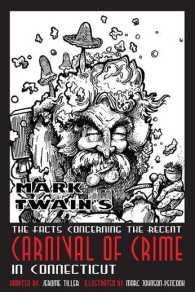Full Description
Critical Sociolinguistic Research Methods is a guide to conducting concrete ethnographic and discourse analytic research projects, written by top scholars for students and researchers in social science fields. Adopting a critical perspective focusing on the role of language in the construction of social difference and social inequality, the authors walk the reader through five key moments in the life of a research project: composing research questions, designing the project, doing fieldwork, performing data analysis and writing academic texts or otherwise engaging in conversation with different types of social actors about the project. These moments are illustrated by colour-coded examples from the authors' experiences that help researchers and students follow the sequential stages of a project.
Now in its second edition, this popular and original text has been revised and updated to reflect the latest developments in this field, including expanded sections on the centrality of the ethnographic gaze for the understanding of social processes, and on experiences of diversification in the communication of research results. Through the adoption of multimodal genres, authors share recent experiences of research presentations addressed to non-academic audiences, such as installations and photography, and interactive maps.
Clear and highly applicable, with a detailed workbook full of practical tips and examples, this book is a great resource for graduate-level qualitative methods courses in linguistics and anthropology, as well as methods courses in the humanities and social sciences that focus on the role of language in research. It is a timely text for investigating language issues that matter and have consequences for people's lives.
Contents
List of Illustrations
Acknowledgements
Introduction
0.1 Why Language Matters Now
0.2 Research as Socially Constructed Knowledge
0.3 Research as Experience and as Conversation
0.4 The Research Process: Sequencing, Recursivity and Rhizome
0.5 The Authors as Your Guides and Conversational Partners
0.6 Summary
1 First Key Moment: Formulating Your Research Question
1.1 Research Questions as (Hi)Stories and Conversations
1.2 Different Ways to Get to Your Research Questions
1.3 Reflexivity, Ethics and Research Questions
1.4 Summary
2 Second Key Moment: Designing Your Research
2.1 What Is Research Design?
2.2 Research Design as Projected Work Plan
2.3 Where to Start? With Whom?
2.4 Approaches and Evidence
2.5 Data Recording and Documentation
2.6 Ethics and Politics
2.7 Research Design as Discursive Genre
2.8 Summary
3 Third Key Moment: Generating your Data
3.1 Fieldwork: Producing Data
3.2 Observing: Finding Out What People Do
3.3 Eliciting: Finding Out What People Say
3.4 Material Traces: Other Voices
3.5 Summary
4 Fourth Key Moment: Analyzing Your Data
4.1 What Is Analysis? What Does It Feel Like to Do It?
4.2 Mapping (and Categorizing)
4.3 Tracing
4.4 Connecting
4.5 Claiming
4.6 Analysis as Ethical and Political Conversation
4.7 Pulling It Together
4.8 Summary
5 Fifth Key Moment: Making Your Story
5.1 Writing the Story the Research Tells
5.2 Researchers as Knowledge Producers
5.3 Genre Expectations
5.4 Knowledge Mobilization
5.5 Summary
6 Shop Floor
6.1 Introduction: What Do We Mean by Shop Floor?
6.2 Moment 2: Designing Your Research
6.3 Moment 3: Generating Your Data
6.4 Moment 4: Analyzing Your Data
6.5 Moment 5: Making Your Story
Epilogue
References
Further Reading
Index







